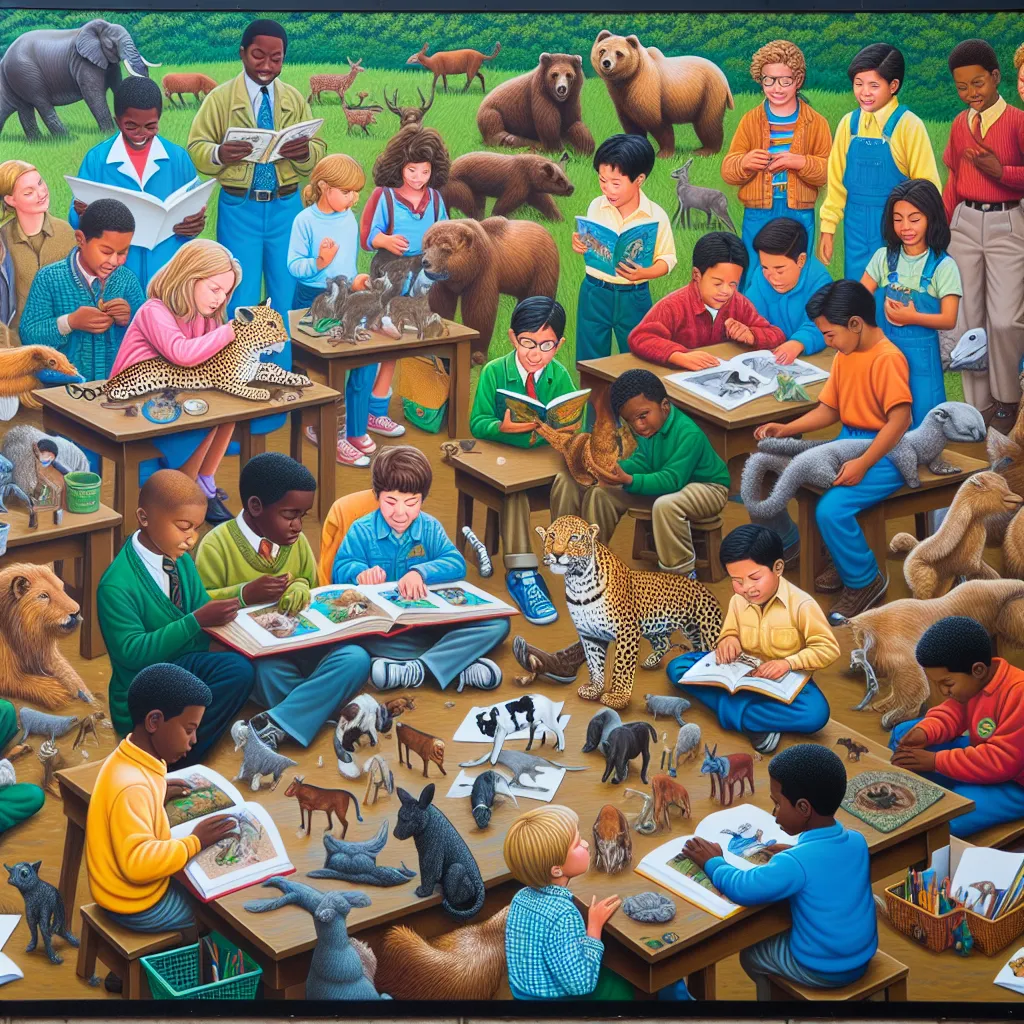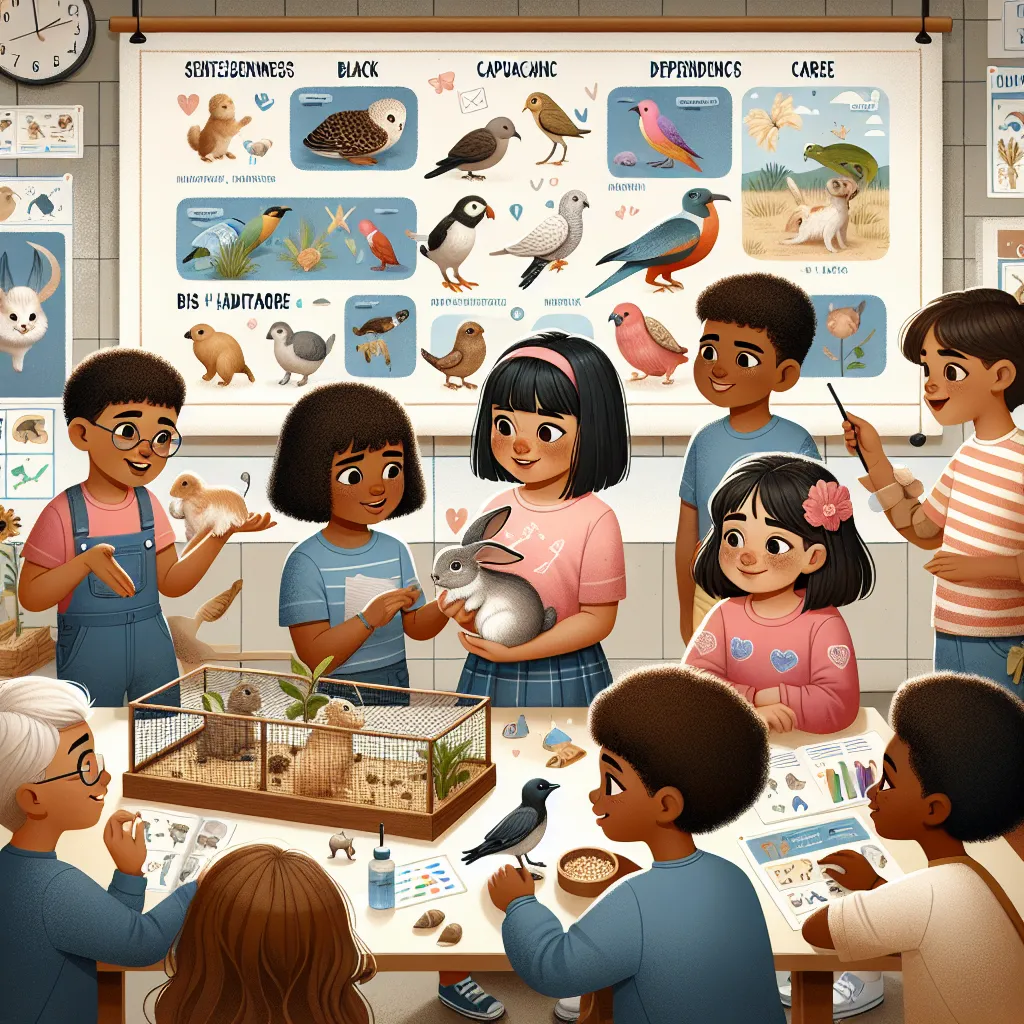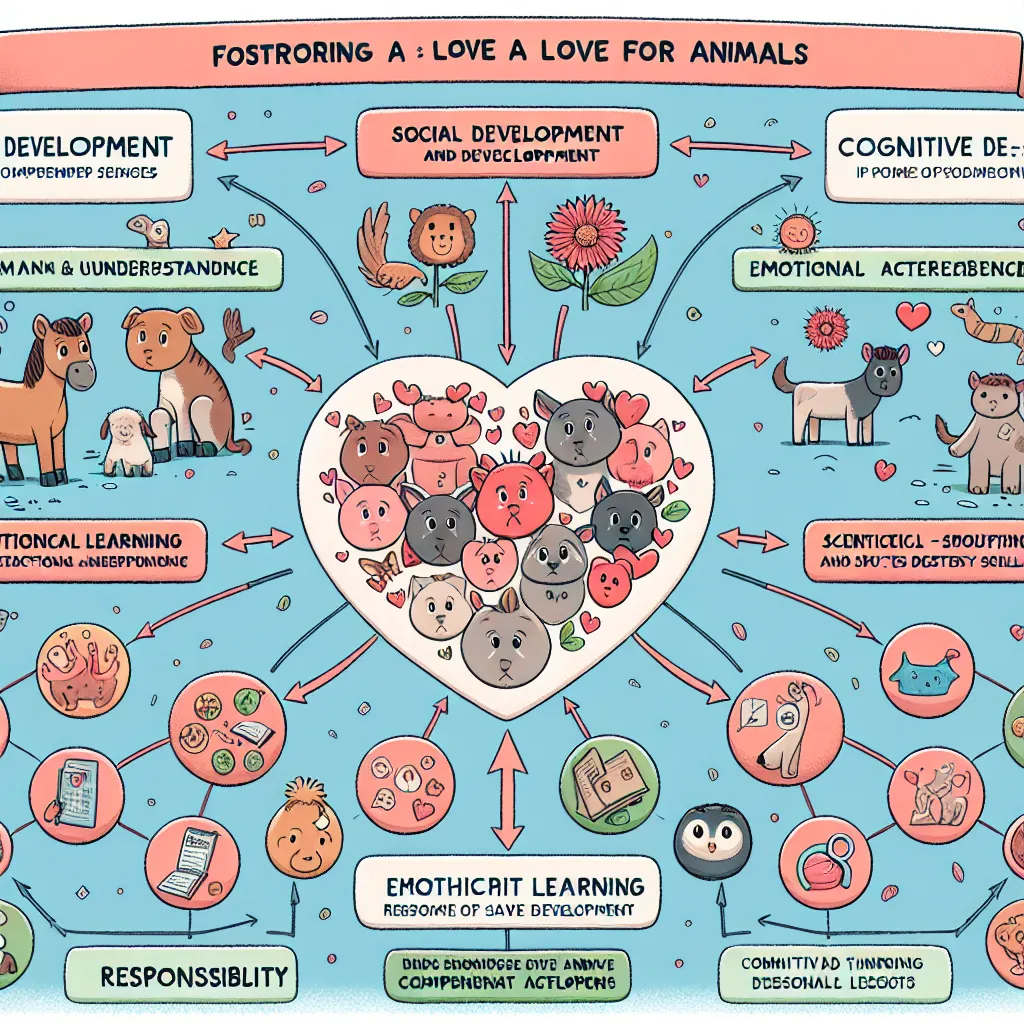Ask AI on The Internet
Question: As a foundation and intermediate phase teacher, developing a love of animals in your students is an important aspect of their holistic development. Write an essay of 1000-1200 words (this is about 2-3 typed pages) in which you discuss why this is important and how can you as foundation and intermediate phase teachers effectively foster a sense of compassion and love for animals in your students? Your essay should consider the following: 1. Why fostering a sense of compassion and love for animals in children is important. 2. An understanding of how developing a love of animals can contribute to students' overall social, emotional, and cognitive development. 3. Teaching resources. 4. Discussions. 5. Activities or projects. 6. Integration of technology. 7. Role modelling/Reflections of your own experiences. 8. Please note this scaffolded question builds upon the previous assignment, allowing you to delve deeper into the topic and explore various aspects of developing a love of animals in students.
### Fostering a Love for Animals Among Students in Foundation and Intermediate Phases: An Essential Component of Holistic Development Developing a love and compassion for animals in children is a pivotal aspect of their holistic development. As educators, our role transcends beyond simply imparting academic knowledge; we have a responsibility to nurture empathetic, balanced human beings. Encouraging a sense of love and compassion for animals in students contributes significantly to their social, emotional, and cognitive development. This essay will delve into why fostering this sense of compassion is important, and how teachers can effectively implement this through teaching resources, discussions, activities, projects, and technology, while also role modeling these values themselves. #### The Importance of Fostering Compassion and Love for Animals Empathy towards animals instills a sense of responsibility and kindness in children. Animals are sentient beings that teach us invaluable lessons about empathy, respect, and the intrinsic value of life. Developing compassion for animals in children can lead to the nurturing of more empathetic and socially responsible adults. It can also contribute to a child's moral development, promoting values such as patience, care, and respect for all living beings. This sense of compassion often extends beyond animals, fostering a more inclusive and empathetic approach towards human interactions as well. #### Contribution to Social, Emotional, and Cognitive Development Understanding animal behavior and needs can greatly enhance a child's cognitive development. Learning about different species, habitats, and biological processes can stimulate curiosity and scientific inquiry. Additionally, positive interactions with animals can improve social skills, self-esteem, and emotional regulation. The unconditional love and companionship of animals can be particularly beneficial for children who struggle with social or emotional difficulties, offering them comfort and stability. #### Teaching Resources A variety of teaching resources can be utilized to foster a love for animals among students. Books, documentaries, and educational websites provide important information and stimulate interest. Books like "Charlotte's Web" by E.B. White or "The Tale of Despereaux" by Kate DiCamillo are excellent choices for younger readers, while documentaries like "Planet Earth" narrated by David Attenborough can captivate older students. Incorporating these resources into the curriculum not only enhances literary and visual learning but also motivates students to engage more deeply with the subject matter. #### Discussions Classroom discussions play a crucial role in fostering empathy and understanding. Addressing topics like endangered species, the importance of animal conservation, and ethical treatment of animals can provoke thoughtful dialogue among students. It’s valuable to encourage students to share their own experiences with animals, allowing them to express their feelings and opinions. Such discussions can be scaffolded to guide students towards understanding broader issues of animal rights and environmental sustainability, making connections to real-world problems and solutions. #### Activities and Projects Hands-on activities and projects make learning about animals engaging and memorable. Field trips to zoos, animal shelters, or nature reserves allow students to observe animals in various environments and learn about their behaviors and needs. Classroom projects, such as creating animal habitat dioramas or conducting inquiry-based research on specific species, further solidify their understanding and interest. Involving students in service projects, like organizing a donation drive for local animal shelters or adopting a classroom pet, fosters a sense of responsibility and direct compassion. #### Integration of Technology Technology can significantly enhance the learning experience. Virtual field trips, interactive apps, and online games focusing on wildlife conservation can be powerful tools. Programs like Animal Jam, offered by National Geographic, or websites such as ARKive, which provides multimedia about global biodiversity, can be integrated into the curriculum to make learning about animals more interactive and fun. Technology can also connect students with experts via video conferences or webinars, providing them with firsthand insights from veterinarians, zoologists, or conservationists. #### Role Modelling and Reflecting on Personal Experiences As educators, our attitudes and behaviors have a profound impact on our students. Sharing personal experiences with animals and demonstrating compassion towards them can serve as powerful role models. Reflecting on and discussing positive interactions with pets, wildlife encounters, or involvement in conservation efforts can inspire students. Teachers can also model responsible pet ownership and animal care, exhibiting behaviors for students to emulate. By creating a classroom environment that values and respects all living beings, teachers can instill these values in their students. ### Conclusion In conclusion, fostering a love and compassion for animals in students is an essential aspect of holistic education. It nurtures empathy, responsibility, and curiosity, contributing to their social, emotional, and cognitive development. By utilizing a variety of teaching resources, facilitating meaningful discussions, organizing engaging activities and projects, integrating technology, and modeling compassionate behavior, educators can effectively instill these values in their students. This not only enhances their education but also cultivates a generation of caring, responsible individuals who appreciate and respect all forms of life.
Think your answer is better than the AI's? Post it below.
Other Most Relevant Posts:
Question Tags
If you want your question answered by an AI, click here.







Post your own comment: